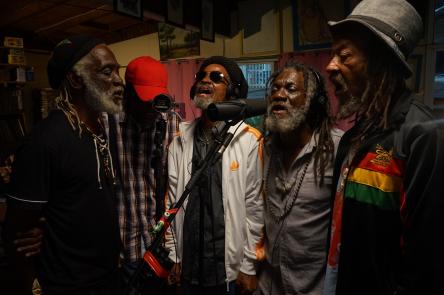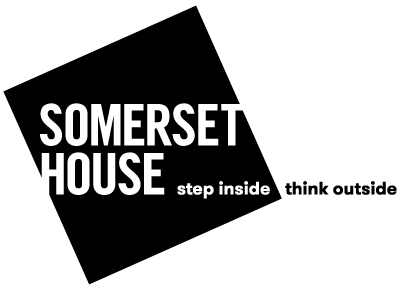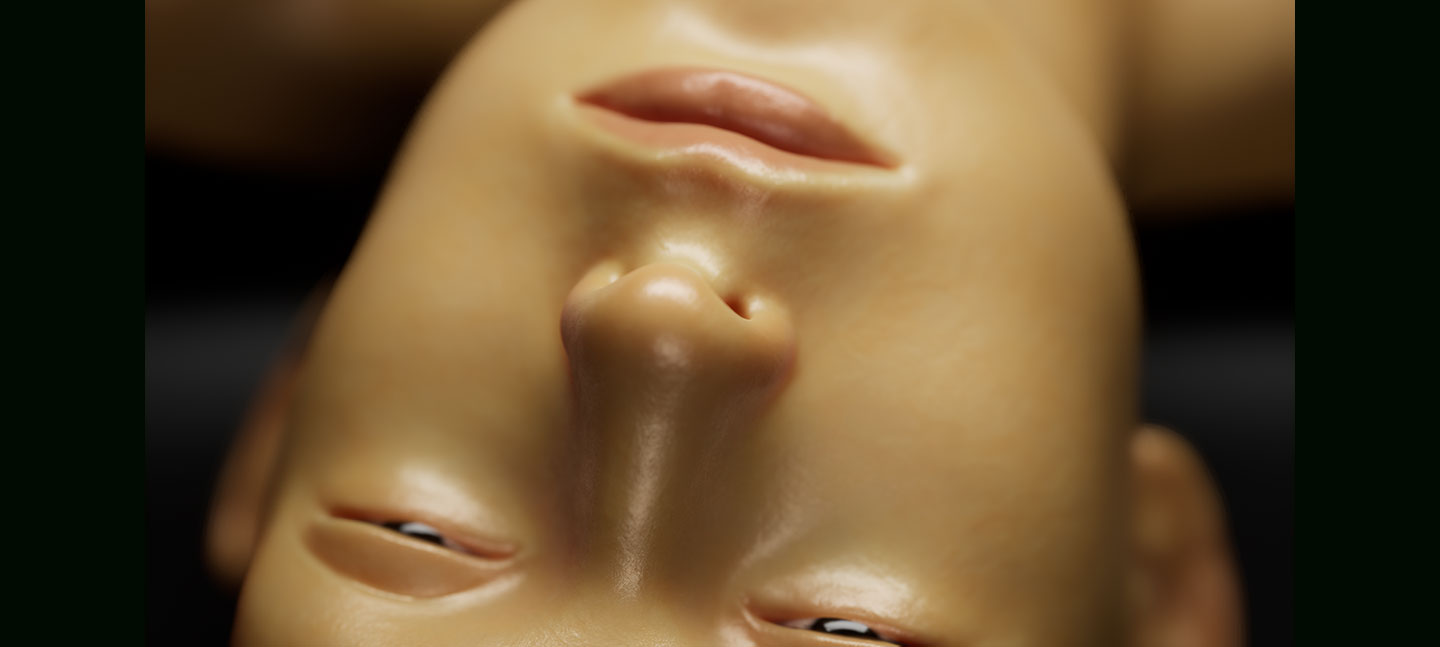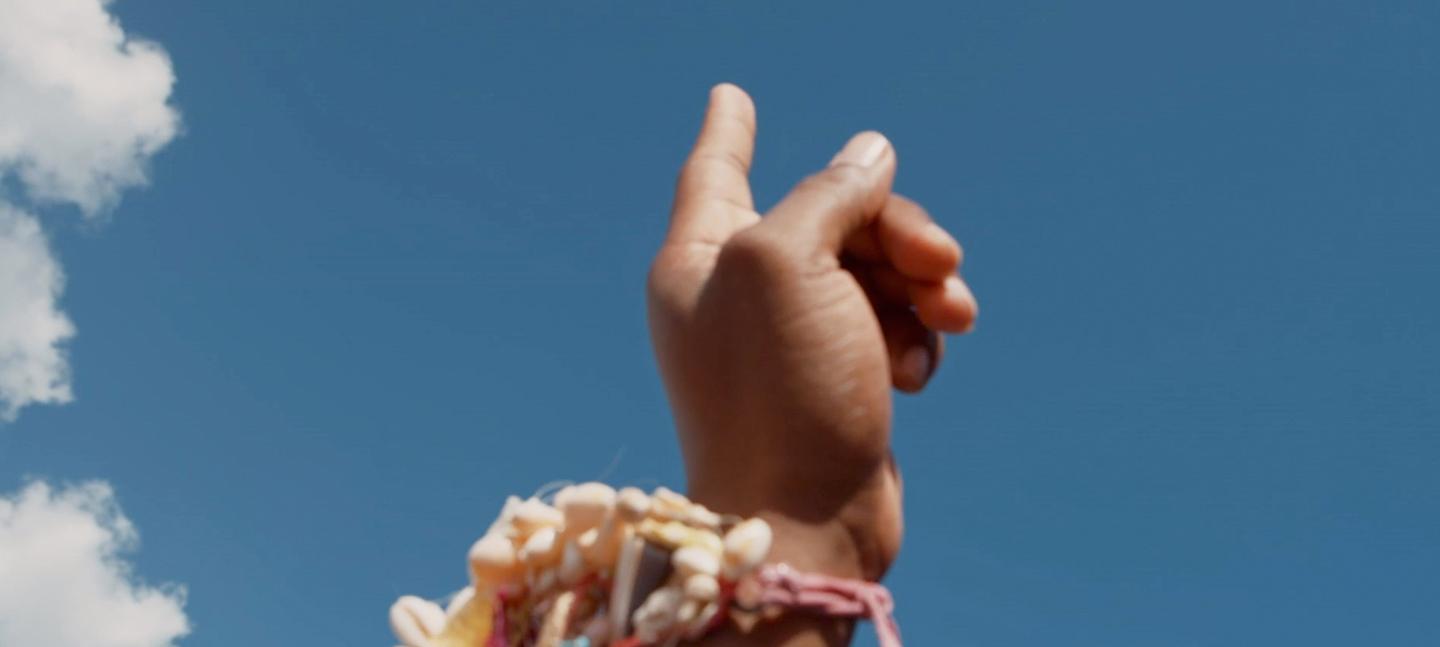Contributors
Zak Ové
Curator of Get Up, Stand Up Now
Zak Ové shared his father’s passion for film and photography as he assisted him on films sets from a young age and eventually studied Film at St. Martins School of Art, London. Influenced by Trinidad’s steel pan, Zak became an accomplished percussionist; music and art remained the backbone of his work when he moved to New York, as a Music Video Director, shooting classic videos of that time. Extending his work into advertising Zak directed a range of campaigns and worked with Lee Scratch Perry, whose freedom of creativity left its mark on Zak. Ultimately disillusioned with the commercial world Zak returned to Trinidad to document Carnival and its old-time masquerade which subsequently inspired him to create sculptural artworks.
Errol Lloyd
Errol Lloyd exhibited his paintings with the Caribbean Artists Movement in the mid 1960s and subsequently worked on commissioned busts of a number of prominent West Indians. These included past Prime Minister of Jamaica Sir Alexander Bustamante, Lord Pitt, C.L.R. James, Gary Sobers, John La Rose, George Lamming and Linton Kwesi Johnson. His paintings have been more recently represented in prestigious exhibitions including Transforming the Crown at The Bronx Museum in New York, as well as No Colour Bar at London’s Guildhall Art Gallery and The Lie of the Land at the Milton Keynes Gallery.
Normski
Norman ‘Normski’ Anderson was bought his first camera by his Jamaican mother at an auction when he was nine years old. His interest in photography was partly inspired by Horace Ové, as he was childhood friends with Ové’s son Zak. Normski was part of the emerging hip hop music scene during the 1980s and his involvement in music culture led him to photograph hip hop artists and fashions for publications like The Face, i-D and Vogue. Normski harnesses his personal sensibilities to capture exquisite detail and memories that might have otherwise gone unnoticed. He also created publicity photographs for the musicians themselves. He has also worked as a DJ and television presenter.
LR Vandy
LR Vandy, born Lisa Vandy, is an artist of Nigerian and Irish descent. She studied at Camberwell College of Arts before completing her Master’s degree in Furniture Design at the Royal College of Art. She uses a mixture of found and handmade objects to create new meaning by bringing together seemingly unrelated mediums. She is interested in the transformation of identity and often draws upon the tradition of talisman, charms, amulets, witchcraft and voodoo in her work.
Rhea Storr
Rhea Storr’s practice is concerned with producing images which refute stereotypes of Black identity. Working on 16mm film, but also making peripheral drawings, photographs and scores, she questions how a body performs and how other bodies react to it. Of Bahamian and English heritage, her interests centre around the inherent tensions of being between two cultures where oversimplified statements about racial identity have no meaning. Carnival is often the subject of her work, and her approach affirms Caribbean culture while subverting traditional power structures.
Thomas J Price
Born to a British mother and Jamaican father, Thomas J Price has been working creatively from a young age. His work across media, encompassing sculpture, film and photography, is engaged with issues of representation and perception in society and in art. All of Price’s work shares a fascination with the minutiae of body language, facial expression and external presentation and in turn, their ability to suggest a state of mind. Since 2005, Price has been making figurative sculptures which vary in sizes from towering nine foot figures to single heads on plinths.









